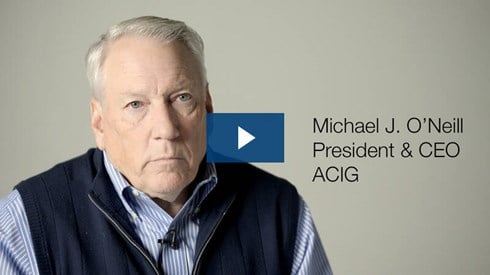What Is Captive Insurance?


A "captive insurer" is generally defined as an insurance company that is wholly owned and controlled by its insureds; its primary purpose is to insure the risks of its owners, and its insureds benefit from the captive insurer's underwriting profits.
These points do not clearly distinguish the captive insurer from a mutual insurance company. A mutual insurance company is technically owned and controlled by its policyholders. But no one who is merely a mutual insurance company's policyholder exercises control of the company. The policyholder may be asked to vote on matters requiring policyholder action. But this usually means that the policyholder will be presented with a proxy and advised by the board that runs the company as to how to exercise its vote. As soon as the insurance ceases, so does the policyholder's ownership status. The policyholder has not invested any assets in the insurance company and does not actively participate in running it.
Captive insurance is utilized by insureds that choose to
- put their own capital at risk by creating their own insurance company,
- working outside of the commercial insurance marketplace,
- to achieve their risk financing objectives.
Reviewing these three essential features of captive insurance will help to clarify the nature of a captive insurance company.
Captive Insureds Put Their Own Capital at Risk
Any insured who purchases captive insurance must be willing and able to invest its own resources. The insured in a captive insurance company not only has ownership in and control of the company but also benefits from its profitability.
A policyholder in a mutual insurance company is theoretically entitled to receive dividends if the company makes a profit. In reality, however, mutual insurance companies generally accumulate rather than distribute their surplus.
Working Outside the Commercial Insurance Marketplace
Insureds in a captive choose to put their own capital at risk by working outside of the traditionally regulated commercial insurance marketplace. The traditional insurance regulatory environment tries to "protect" the insured from the insurer. Regulations are expensive to implement, costly to monitor, and sometimes fail. Their main thrust is to restrict what an insurer may do and how it may be done.
Captive insurers often have significantly less capital than commercial insurers and no protection for the insureds from state guaranty funds. But those who use captive insurance choose to participate in the risks and rewards associated with using their own risk capital, rather than paying to use the capital of commercial insurers. They make this choice believing that captive insurance offers something superior to commercial insurance. And commercial insurance is not always available. Since they are not traditional commercial insurers, captives are considered a part of what is often called the "alternative market," or "alternative risk transfer (ART) market."
To Achieve Risk Financing Objectives
When the products offered by insurers do not meet an insured's risk financing needs, the best option might be to form a captive insurer. The main reasons why organizations wish to better control their risk management programs are excessive pricing, limited capacity, coverage that is unavailable in the "traditional" insurance market, or the desire for a more cost efficient risk financing mechanism. Other reasons for utilizing captive insurance include
- Broader coverage,
- Stability in pricing and availability,
- Improved cash flow, and
- Increased control over the program.
Broader Coverage
Many captives are established because insurance in the commercial market is prohibitively expensive, poorly matched to the insured's needs, or not available at all. A captive insurer can successfully provide coverage for difficult risks that is tailored to fit the exact needs of the insured(s)—as long as the captive operates within sound underwriting, actuarial, and regulatory guidelines.
Stability in Pricing and Availability
Pricing stability is achieved over time as a captive matures and expands its own risk retention capability. The more capital that is accumulated, the greater the captive insurer's ability to retain risk and insulate itself from changes in the commercial insurance market. A captive insurer can also provide stability in the availability of coverage.
Improved Cash Flow
Cash flow improvements are achieved in a number of ways. Losses retained through a captive reduce or eliminate underwriting profits; reduced losses increase them. Because captive insurance inherently offers financial rewards for effectively controlling losses, safety and loss control get a higher level of attention.
The underwriting profits and gains from the invested premiums that would otherwise be held by a conventional insurer are retained by the captive. Even with conservative investment portfolios, the dollar amounts are substantial due to the high levels of capital and surplus typically held.
Finally, cash flow is improved by reducing the expense factors associated with commercial insurance. Generally, insurers allot 60 percent or more of premiums taken in to loss payments, while the other 40 percent or so covers expenses and profits. Captives have far fewer expense components than do commercial insurers. Estimates for the expense components of captives typically fall in the 15 percent to 30 percent range. This means that for every $10 million in net written premium, a successful operating captive can save insureds $1 million to $2.5 million in expenses alone.
Increased Control over the Program
Ownership and control by its insureds distinguish a captive insurer from a commercial insurer. This is not the type of ownership or control evidenced by a nominal percentage share in the company's surplus. It means ownership in the company's strategic business purpose.
Captive insurers offer increased control in a number of other ways as well. For one, captive owners have more control over insurance-related services such as safety and loss control, and claims administration. Safety and loss control services established by a captive can be tailored to each participant's individual needs, resulting in safer workplaces and more favorable loss experience. Claims handling services are unbundled and separately arranged. Strict guidelines can be drafted and enforced by the captive. This is preferable to allowing a commercial insurer, whose interests might be more self-serving than an insured desires, to dictate how claims are handled.
Types of Captives
Captive insurers fall into two main groups.
- Pure captives: captive insurers that are 100 percent owned, directly or indirectly, by their insureds.
- Sponsored captives: captives owned and controlled by parties unrelated to the insured.
Pure Captives
The term "pure captive" is generally used to describe captives insuring only the risks of their owner or owners. Single-parent captives have only one owner. Group captives have multiple owners.
A group captive is formed by a group of individuals or entities that come together to jointly own a captive insurance company. Industrial insured group-owned captives typically insure only insureds in the same industry group, or with homogeneous risk, which creates group buying power and other risk management efficiencies.
Another kind of group-owned captive allows a group of insureds from entirely different industry groups to own a captive jointly. This type of heterogeneous group captive may be a reinsurance pool, formed to create underwriting capacity through the pooling of risk. A reinsurance pool does not provide direct insurance. It reinsures either the captives of its owners or the admitted insurers that issue policies to the pool's owners. The group captive or pool may also provide other risk management services for the group.
Sponsored Captive Insurers
Sponsored captive insurers, sometimes referred to as "nonowned" or "nonaffiliated" captives, have many of the same elements as a pure captive insurer. The insureds are required to put their capital at risk, risks are financed outside of the commercial regulatory environment, and the purpose is to achieve the risk financing objectives of the captive's insureds. However, a sponsored captive is not formed by its insureds—known as "participants," and a sponsored captive does not necessarily pool its insured's risks.
A sponsored captive may be set up by an insurance industry-related entity to be used by its clients, or there may be no previous connection between the sponsor and the participants. The sponsor contributes the captive's statutory capital (sometimes called core capital). Many sponsored captives do not require insureds to pay in capital, but simply to pay an access fee. These are sometimes referred to as "rental captives."
A sponsored captive does not necessarily pool the risks of its insureds. It may keep a separate underwriting account for each insured participant. In some domiciles, these accounts are legally separated or protected, and the term "cell captive" is used, meaning that the assets in one participant's account may not be used to pay liabilities in another unless the respective participants have entered into an agreement to do so.
This is a key difference between a pure group captive and a sponsored captive. The sponsored captive can be structured to maintain legally separate underwriting accounts, whereas an insured that is a member or owner in a pure group captive shares risk with the other captive insureds.
Insureds who are shareholders or members of an industrial insured group captive have to contribute capital to access the captive insurance program, and their capital is at risk based on the performance of the group as a whole. In a sponsored (rented) segregated cell captive, each participant's risk capital is typically only exposed to the risk of its own underwriting performance.
If required under domiciliary law, the sponsor's core capital may be at risk. This would mean that if one insured becomes bankrupt or otherwise defaults on its obligations, producing an insolvent cell or underfunded underwriting account, liabilities of the cell would become liabilities of the sponsor. In domiciles that do not have the legal requirement that the sponsor's core capital is at risk, the cell participant may be required to sign an agreement that losses paid under policies issued or reinsured by the captive are limited to the assets in the participant's cell.
Sponsored captives may be used by insureds that are too small to own their own captives. The captive cell program acts like an incubator for these small insureds to begin a captive program. When sufficient surplus has been accumulated, an insured has the option of using those funds to set up its own pure captive insurance company.
A captive insurer may be formed by an association for the benefit of its members. Does this make it a "sponsored captive"? Not exactly! The association captive is "pure," meaning that it insures only the risks of its owners. The sponsoring association may contribute 100 percent of the required capital, but since the association is owned by its members, its members indirectly own and have voting control over the captive insurance company.
Summary
In some ways, a captive insurance company resembles a mutual insurance company. However, the owner(s) of a captive place their own capital at risk, and they directly control their insurer. Captive insurance company owners are willing to risk their own capital in anticipation of the financial rewards associated with better control over their insurance program. These include broader coverage, stabilized pricing and availability of insurance, and improved cash flow.
Pure captives are owned by their insureds, while sponsored captives are owned and controlled by unrelated parties. Pure captives include both single-parent captives and group captives. Sponsored captives include rental captives and cell captives.
This article is based on Chapter 1 of Captives and the Management of Risk , Third Edition, by Kathryn A. Westover, published by International Risk Management Institute, Inc., Dallas, TX, 2014.
Get the Book
In the book Captives and the Management of Risk, Kate Westover answers the question: What is captive insurance? The book not only answers this question but is also designed to answer 13 essential captives frequently asked questions (CAPFAQs) that business professionals ask about captives and captive insurance.




